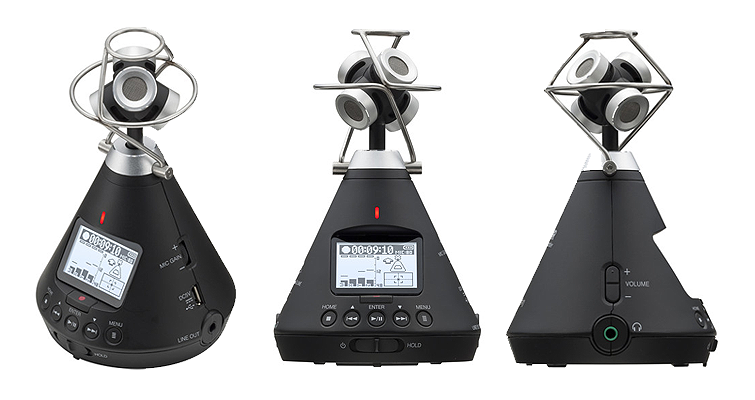In the world of professional audio recording, paying attention to small details can make the difference between an acceptable recording and a great one. One often ignored but important part of this process is the shock mount. This article explores why it is important in professional audio recording, explaining how it works, its impact on audio quality, and the different options available.
How Does Shock Mount Work?
Imagine someone accidentally bumps into the table or there’s a sudden thump on the floor – those vibrations can travel up the microphone stand and interfere with the recording, creating unwanted noise.
Here’s where the magic of a shock mount for mic comes in. It is designed to isolate the microphone from these vibrations. It typically consists of a cradle or basket that holds the microphone. This cradle is attached to the stand with flexible bands or suspensions. These bands act as shock absorbers, preventing vibrations from reaching the microphone.
Think of it like a protective shield for your microphone. When there’s a sudden movement or impact, it absorbs the shock, allowing the microphone to stay still and undisturbed. This is crucial in professional audio recording settings, where clarity and precision are essential.
The design of shock mounts may vary, but the principle remains the same – to isolate the microphone and keep it safe from vibrations. Some shock mounts are specifically designed for certain microphone models, ensuring the best fit. Others are more versatile and can accommodate different types of microphones.
Read More: Wireless vs wired Microphone: Pros and Cons
Effects of Vibrations on Audio Quality
Vibrations can harm audio recordings by adding unwanted noise and distortion. In professional settings where perfect audio quality is a must, shock mount play a big role in keeping recordings clean. Vibrations from footsteps, nearby equipment, or low-frequency sounds can mess up the clarity and accuracy of a recording. This makes shock mounts a necessary tool for audio engineers.
Preventing Unwanted Noise and Vibrations
One of the main jobs of it is to stop unwanted noise and vibrations from reaching the microphone. This is especially important in places with lots of people walking around, loud equipment, or other disturbances. Without a shock mount, these vibrations can go straight to the microphone, leading to an audio signal that needs a lot of fixing later.
Professionalism in Audio Recording
In the professional audio recording world, paying attention to details is very important. Using a shock mount not only shows a commitment to getting the best audio quality but also reflects a high level of professionalism that’s expected in the industry. Clients and collaborators appreciate the careful approach to recording, and using can be seen as a sign of dedication to delivering top-quality results.
Read More: Exploring the Impact of Microphone Placement on Sound Quality
Types of Shock Mounts and What They Offer
It come in different types, each made for various recording situations and microphone designs. Some common types include elastic suspension mounts, band-style mounts, and pneumatic mounts. Each type has special features like adjustable tension, compatibility with different microphone sizes, and different levels of isolation. Knowing the needs of your recording environment and microphone is important in choosing the right shock mount.
Choosing the Right Shock Mount for Your Microphone
When picking a shock mount, it’s important to think about things like the microphone’s size and weight, what you’ll use it for, and how much isolation you need. Making sure it works well with your microphone is crucial for the best performance. Manufacturers often give compatibility information to help users make informed decisions.
Case Studies: Before and After Shock Mount Use
To show how shock mounts make a difference in audio quality, let’s look at a few examples. In controlled settings, we can compare recordings made with and without it. The change in clarity, reduced noise, and overall audio quality after using it shows how effective they are.
Common Misunderstandings about Shock Mounts
Despite being widely used, there are common misunderstandings about shock mounts. Some might think they’re only needed in specific recording situations or that they don’t make a big difference in audio quality. Clarifying these misunderstandings is important to encourage more people to use them and to help them understand how crucial they are in professional audio recording.
Maintenance and Best Practices for Shock Mounts
To keep it working well for a long time, regular maintenance and following best practices are key. Cleaning, checking for wear and tear, and storing it properly all contribute to their longevity. Users should also follow guidelines from manufacturers about setting up, adjusting, and using it to get the best performance.
Read More: Microphone Sound Absorption and Reflection
Future Trends in Shock Mount Technology
As technology gets better, shock mount design and features will also improve. Future trends might include using smart sensors for real-time adjustment, better materials for more durability, and innovative suspension systems for even better isolation. Staying informed about these advancements will help audio professionals use the latest technology to improve their recording abilities.
Conclusion: Raising Audio Recording Standards with Shock Mounts
In summary, using it in professional audio recordings is crucial for getting the best audio quality. By understanding how it works, recognizing the impact of vibrations on audio quality, and choosing the right shock mount for mic-specific needs, audio engineers can make sure their recordings meet the highest standards. As the industry evolves, using it in recording setups will continue to be a basic practice for professionals dedicated to delivering great audio experiences.




